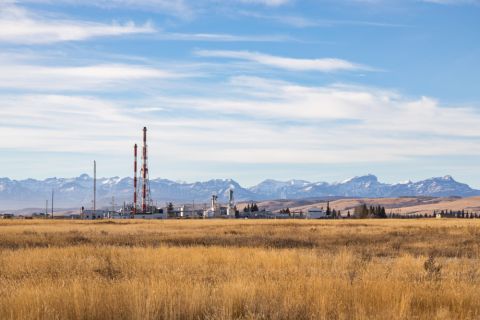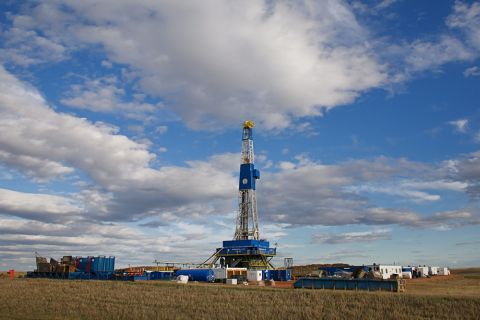[Editor's note: This article was updated at 1:44 p.m. CST Oct. 8.]
Oil companies, including BP Plc (NYSE: BP) and Exxon Mobil Corp. (NYSE: XOM), on Oct. 8 began evacuating personnel from U.S. Gulf of Mexico (GoM) oil and gas production platforms as Hurricane Michael intensified on its way to becoming a major hurricane this week.
Oil and gas producers have shut 19% of oil production and 11% of natural gas production in the GoM ahead of Hurricane Michael, the Bureau of Safety and Environmental Enforcement (BSEE) said on Oct. 8. The closures represent 324,190 barrels of oil per day and 283.88 million cubic feet per day of natural gas, BSEE said, citing reports from eight companies.
Exxon Mobil, BP, Equinor (NYSE: EQNR) and BHP Billiton have all evacuated staff ahead of the storm.
The National Hurricane Center upgraded the storm on Oct. 8 and forecast it would become at least a Category 3 hurricane on the five-step Saffir-Simpson scale before making landfall on the U.S. Gulf Coast. Category 3 storms have sustained winds of 111 to 129 miles (178 to 208 km) per hour.
BP said it shut in production at four production platforms and drilling rigs are taking steps to withstand the storm. The platforms evacuating personnel and shutting in production include BP's Atlantis, Mad Dog, Na Kika and Thunder Horse facilities, the company said.
Norweigan state-oil company Equinor evacuated personnel from its Titan oil platform in the GoM ahead of Hurricane Michael, a spokesperson for the company said.
BHP Billiton said it was shutting in production at its Shenzi and Neptune facilities in the GoM and evacuating staff as a precaution ahead of Hurricane Michael.
Exxon Mobil also removed staff from its Lena production platform but said it did not expect the staff reduction to affect output.
Hess Corp. (NYSE: HES), Royal Dutch Shell Plc (NYSE: RDS.A) and Anadarko Petroleum Corp. (NYSE: APC) said they were monitoring the storm and would take actions as needed.

The storm is tracking east of major oil lease areas, limiting its effect on production, said John Tharp, operations supervisor at Weather Decision Technologies. Producers should still expect 15-ft to 20-ft waves, "enough to be disruptive of oil production operations," west of the storm track, he said.
The storm's current path takes it away from refinery-heavy areas of the central and western Gulf Coast.
Shipping ports, including Gulfport and Pascagoula, Miss.; Mobile, Ala.; and Pensacola, Fla., were open on Oct. 8, but the U.S. Coast Guard warned of gale force winds in the next 48 hours.
Offshore production in the GoM accounts for 17% of total U.S. crude oil output, according to the U.S. Energy Information Administration (EIA). Natural gas production from GoM offshore operations provides 5% of the U.S. total.
Over 45% of U.S. refining capacity is located along the Gulf Coast, along with 51% of the nation's natural gas processing plant capacity, the EIA said.
Production platforms are permanently attached to the sea floor and cannot be moved. Rigs, used for exploration, can be towed out of harm's way during a storm.
Recommended Reading
Athabasca Oil, Cenovus Energy Close Deal Creating Duvernay Pureplay
2024-02-08 - Athabasca Oil and Cenovus Energy plan to ramp up production from about 2,000 boe/d to 6,000 boe/d by 2025.
CEO: EQT Positioned to Meet Demand of Power-guzzling AI Data Centers
2024-04-01 - EQT Corp.’s Toby Rice said demand for AI could exceed the power demand required to meet U.S. residential demand and jump 20% by 2030, in this Hart Energy Exclusive interview.
‘Monster’ Gas: Aethon’s 16,000-foot Dive in Haynesville West
2024-04-09 - Aethon Energy’s COO described challenges in the far western Haynesville stepout, while other operators opened their books on the latest in the legacy Haynesville at Hart Energy’s DUG GAS+ Conference and Expo in Shreveport, Louisiana.
Analyst: Chevron Duvernay Shale Assets May Sell in $900MM Range
2024-01-29 - E&Ps are turning north toward Canadian shale plays as Lower 48 M&A opportunities shrink, and Chevron aims to monetize its footprint in Alberta’s Duvernay play.
Silver Hill Energy Enters Bakken with Liberty Resources Acquisition
2024-01-31 - Silver Hill Energy Partners LP is getting into the Bakken in North Dakota through the acquisition of Liberty Resources II.





